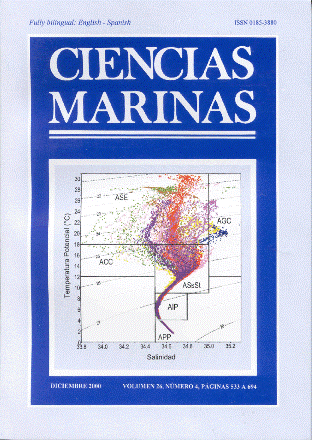Geographic pattern of genetic variation in modiolus capax (conrad, 1837) from the gulf of california
Main Article Content
Abstract
The genetic variation of the two largest Modiolus capax (Conrad, 1837) populations that occur on the west coast of the Gulf of California was studied by the allozyme analysis of eight polymorphisms of twelve isozyme loci. Genetic variation was examined in about 200 mussels collected from three levels of the intertidal zone and from three sublittoral demes. Two loci (LAP* and GPI*) displayed particularly high allelic diversity (18 and 19 alleles, respectively), many of which were rare (p < 0.1). Heterozygote deficiency was a common feature across all loci, probably explained by the Wahlund effect. The genetic structure of the population was analyzed using Wright's F-statistics, and its significance was assessed by permutation and numerical resampling methods. There was a lower degree of genetic divergence among intertidal levels (FST = 0.042) than among sublittoral demes (FST = 0.080), yet both values were significant. Comparisions between grouped genotype frequencies for each extreme locality (San Felipe vs La Paz) revealed a low but significant level of genetic divergence (FST = 0.049), which suggests genetic flow over vast geographic distances (approximately 1100 km), but slight local genetic divergence due to physical or biological factors acting over the larval dispersal and settlement.
Downloads
Article Details
This is an open access article distributed under a Creative Commons Attribution 4.0 License, which allows you to share and adapt the work, as long as you give appropriate credit to the original author(s) and the source, provide a link to the Creative Commons license, and indicate if changes were made. Figures, tables and other elements in the article are included in the article’s CC BY 4.0 license, unless otherwise indicated. The journal title is protected by copyrights and not subject to this license. Full license deed can be viewed here.

